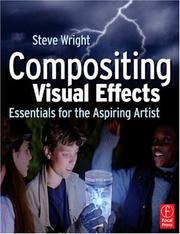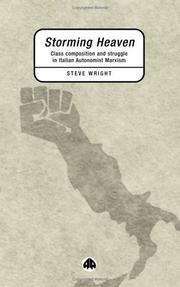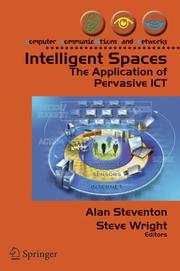| Listing 1 - 10 of 31 | << page >> |
Sort by
|
Book
ISBN: 3540521305 0387521305 3540469036 Year: 1989 Volume: 1413 Publisher: Berlin Heidelberg Tokyo Springer
Abstract | Keywords | Export | Availability | Bookmark
 Loading...
Loading...Choose an application
- Reference Manager
- EndNote
- RefWorks (Direct export to RefWorks)
Functional analysis --- 51 --- Von Neumann algebras --- Factors (Algebra) --- Algebra --- Factorization (Mathematics) --- Algebras, Von Neumann --- Algebras, W --- Neumann algebras --- Rings of operators --- W*-algebras --- C*-algebras --- Hilbert space --- Mathematics --- Von Neumann algebras. --- Factors (Algebra). --- 51 Mathematics
Book
ISBN: 3319459554 3319459546 9783319459547 Year: 2016 Publisher: Cham: Springer,
Abstract | Keywords | Export | Availability | Bookmark
 Loading...
Loading...Choose an application
- Reference Manager
- EndNote
- RefWorks (Direct export to RefWorks)
This book offers an account of the classical theory of quadratic residues and non-residues with the goal of using that theory as a lens through which to view the development of some of the fundamental methods employed in modern elementary, algebraic, and analytic number theory. The first three chapters present some basic facts and the history of quadratic residues and non-residues and discuss various proofs of the Law of Quadratic Reciprosity in depth, with an emphasis on the six proofs that Gauss published. The remaining seven chapters explore some interesting applications of the Law of Quadratic Reciprocity, prove some results concerning the distribution and arithmetic structure of quadratic residues and non-residues, provide a detailed proof of Dirichlet’s Class-Number Formula, and discuss the question of whether quadratic residues are randomly distributed. The text is a valuable resource for graduate and advanced undergraduate students as well as for mathematicians interested in number theory.
Mathematics. --- Commutative algebra. --- Commutative rings. --- Algebra. --- Field theory (Physics). --- Fourier analysis. --- Convex geometry. --- Discrete geometry. --- Number theory. --- Number Theory. --- Commutative Rings and Algebras. --- Field Theory and Polynomials. --- Convex and Discrete Geometry. --- Fourier Analysis. --- Number study --- Numbers, Theory of --- Analysis, Fourier --- Classical field theory --- Continuum physics --- Math --- Algebra --- Geometry --- Combinatorial geometry --- Mathematical analysis --- Physics --- Continuum mechanics --- Mathematics --- Rings (Algebra) --- Science --- Discrete groups. --- Groups, Discrete --- Infinite groups --- Discrete mathematics --- Convex geometry .
Book
ISBN: 1430258845 1430258853 Year: 2013 Publisher: New York : Apress,
Abstract | Keywords | Export | Availability | Bookmark
 Loading...
Loading...Choose an application
- Reference Manager
- EndNote
- RefWorks (Direct export to RefWorks)
Apps have taken the world by storm, and now they're taking SharePoint as well. The biggest new thing in SharePoint 2013, apps are the solution to creating custom code that runs on not just your own SharePoint deployment, but also on others' implementations as well. Pro SharePoint 2013 App Development is your must-have guide to developing app solutions that run on the SharePoint 2013 platform. Using step-by-step tutorials, author Steve Wright creates a sample SharePoint app throughout the course of the book, and you can walk with him through the entire lifecycle of a SharePoint app. Get expert guidance and advice on creating an app, provisioning it for use in SharePoint, securing it from unauthorized use and from other applications, integrating your app with SharePoint search and other platform features, and much more. You'll even discover how to present your app to users on mobile devices like iPads, smartphones, and Microsoft Surface tablets. Apps in SharePoint are here to stay. Don't miss out - pick up a copy of Pro SharePoint 2013 App Development and get started on your own custom apps today. Introduces the architecture for creating and hosting SharePoint apps. Leads the reader through the creation and deployment of a complete solution. Provides an understanding of the security features in the SharePoint app model. Helps the organization leverage internal data securely over the network. Leverages SharePoint search and other services to create rich SharePoint solutions. Introduces the techniques for delivering data on a multitude of web and mobile platforms.
Application software -- Development. --- Computer science. --- Microsoft SharePoint (Electronic resource) -- Programming. --- Open source software. --- Engineering & Applied Sciences --- Computer Science --- Information Technology --- General and Others --- Application software --- Web servers. --- Development. --- Servers, Web --- Webservers --- World Wide Web servers --- WWW servers --- Development of application software --- Computer Science. --- Computer Science, general. --- Informatics --- Science --- Microsoft SharePoint (Electronic resource) --- Microsoft Share point (Electronic resource) --- SharePoint (Electronic resource) --- Programming. --- Client/server computing --- Cookies (Computer science) --- Web hosting --- Equipment and supplies --- Microsoft software. --- Microsoft .NET Framework. --- Information systems. --- Microsoft and .NET. --- Information Systems and Communication Service. --- Computer software --- Computers. --- Automatic computers --- Automatic data processors --- Computer hardware --- Computing machines (Computers) --- Electronic brains --- Electronic calculating-machines --- Electronic computers --- Hardware, Computer --- Computer systems --- Cybernetics --- Machine theory --- Calculators --- Cyberspace --- Intranets (Computer networks)

ISBN: 9780240809632 0240809637 Year: 2008 Publisher: Amsterdam: Focal press,
Abstract | Keywords | Export | Availability | Bookmark
 Loading...
Loading...Choose an application
- Reference Manager
- EndNote
- RefWorks (Direct export to RefWorks)
Put the essential concepts and techniques of digital compositing to work for you without the need of a single mathematical equation. "Compositing visual effects" is lavishly illustrated with hundreds of film shots, figures, illustrations and diagrams to help the visual reader gain a valuable vocabulary and understanding of the full range of visual effects, in which digital compositing plays a key role. Beginning with an inspirational tour of the scope and magnitude of digital compositing you get a solid overview of the kinds of digital effects routinely executed today. See how CGI (Computer Generated Image) is composited with live action, how set extensions are done, and what a match-move shot is. Following that, you learn each of the key applications of digital compositing, which include bluescreen compositing, bullet time shots, motion tracking, and rotoscoping, and you get a primer on digital images, key concepts, and terms used in the compositing process. The subsequent chapters dig down into each of the major digital compositing applications, introducing the fundamental concepts and processes behind them. This includes the many ways to composite CGI, bluescreen compositing, animation, creating masks, working with digital keyers, and many more; but most importantly, the art of digital compositing-making your shots look not just photorealistic, but cool. Learn what is easy and hard, possible and impossible, and what to expect when working on a job that entails digital compositing. There are tips on when not to use the new low-end DV video cameras and tips for the client, such as guidelines on how to shoot a quality bluescreen or greenscreen to get the best results at compositing time. All the while, special attention is paid to defining new terminology and telling a clear story from the ground up, with the only requirement being that you have read the previous chapters. * An accessible introduction to a complex subject for novice compositors * Full color presentation illustrating the art and techniques of the practice * An experienced book author of 20 years compositing experience; with 60 feature film credits including Vanilla Sky, X-Men 2, Swept Away, and Solaris.
Cinéma --- Cinéma, technique --- Informatique appliquée --- Informatique graphique
Multi
ISBN: 9781430258858 1430258853 Year: 2013 Publisher: New York : Apress,
Abstract | Keywords | Export | Availability | Bookmark
 Loading...
Loading...Choose an application
- Reference Manager
- EndNote
- RefWorks (Direct export to RefWorks)
Apps have taken the world by storm, and now they're taking SharePoint as well. The biggest new thing in SharePoint 2013, apps are the solution to creating custom code that runs on not just your own SharePoint deployment, but also on others' implementations as well. Pro SharePoint 2013 App Development is your must-have guide to developing app solutions that run on the SharePoint 2013 platform. Using step-by-step tutorials, author Steve Wright creates a sample SharePoint app throughout the course of the book, and you can walk with him through the entire lifecycle of a SharePoint app. Get expert guidance and advice on creating an app, provisioning it for use in SharePoint, securing it from unauthorized use and from other applications, integrating your app with SharePoint search and other platform features, and much more. You'll even discover how to present your app to users on mobile devices like iPads, smartphones, and Microsoft Surface tablets. Apps in SharePoint are here to stay. Don't miss out - pick up a copy of Pro SharePoint 2013 App Development and get started on your own custom apps today. Introduces the architecture for creating and hosting SharePoint apps. Leads the reader through the creation and deployment of a complete solution. Provides an understanding of the security features in the SharePoint app model. Helps the organization leverage internal data securely over the network. Leverages SharePoint search and other services to create rich SharePoint solutions. Introduces the techniques for delivering data on a multitude of web and mobile platforms.
Computer science --- Computer. Automation --- smartphones --- iPad --- mobiele netwerken --- tablets (informatica) --- computers --- informatica --- computerkunde --- Application software --- Intranets (Computer networks) --- Development. --- Microsoft SharePoint (Electronic resource) --- Programming.
Book
ISBN: 9004471545 9004471537 Year: 2021 Publisher: Leiden ; Boston : Brill,
Abstract | Keywords | Export | Availability | Bookmark
 Loading...
Loading...Choose an application
- Reference Manager
- EndNote
- RefWorks (Direct export to RefWorks)
In The Weight of the Printed Word , Steve Wright explores the creation and use of documents as a key dimension in the activities of the Italian workerists during the 1960s and 1970s. From leaflets and newspapers to books, internal documents and workers' enquiries; the operaisti deployed a wide variety of printed materials in their efforts to organise amongst new subjectivities of mass rebellion. As Wright demonstrates, the practice of working with print was a central part of what it meant to be a workerist or autonomist militant during these years: one that throws light both on the meaning of political engagement, as well as the challenges posed by the use of technologies of communication and by emergent social subjects.
Autonomism --- Press, Labor --- Underground press publications --- History --- Italy --- Politics and government

ISBN: 0745316069 0745316077 Year: 2002 Publisher: London Pluto
Abstract | Keywords | Export | Availability | Bookmark
 Loading...
Loading...Choose an application
- Reference Manager
- EndNote
- RefWorks (Direct export to RefWorks)
Communism --- Labor movement --- Working class --- History --- Italy --- Politics and government
Object
ISBN: 090599843X Year: 1984 Publisher: London Socialist Workers Party
Abstract | Keywords | Export | Availability | Bookmark
 Loading...
Loading...Choose an application
- Reference Manager
- EndNote
- RefWorks (Direct export to RefWorks)
Bibliotheek François Vercammen
Book
ISBN: 9789004471542 9789004471535 Year: 2021 Publisher: Leiden;Boston BRILL
Abstract | Keywords | Export | Availability | Bookmark
 Loading...
Loading...Choose an application
- Reference Manager
- EndNote
- RefWorks (Direct export to RefWorks)

ISBN: 9781846284298 1846280028 9781846280023 9786613250629 1846284295 1283250624 Year: 2006 Publisher: London : Springer,
Abstract | Keywords | Export | Availability | Bookmark
 Loading...
Loading...Choose an application
- Reference Manager
- EndNote
- RefWorks (Direct export to RefWorks)
Intelligent Spaces: The Application of Pervasive ICT sets out a vision where Information & Communication Technology (ICT) moves from the PC on the desktop out into the physical world, and becomes pervasive. The world about us will appear to have real intelligence embedded in it, creating what we term "Intelligent Spaces" or "iSpaces", which will augment and support virtually every human activity. An iSpace consists of • The physical world in which the user exists, in his/her relevant context. • The interface between the digital world and the physical world. This contains embedded sensors to gather data, labels to identify objects, actuators to control things/appliances in the physical world, together with support software to facilitate non-intrusive two-way communication across the interface, • The digital world in which digital knowledge and intelligent systems are available to intelligently analyse data gathered from the physical world, and to influence and support our actions in that physical world. Intelligent Spaces: The Application of Pervasive ICT describes the vision and how it has already been demonstrated in a number of applications ranging from the home, healthcare and traffic systems to monitoring glaciers. It identifies many of the technical, human and business issues which need to be researched before the benefits can become widespread, and describes possible solutions to them. Academic & industrial researchers in Computer Science, IT & Communications, as well as practitioners will find this key reading as it delivers practical & implementable current research.
Computer Science. --- Information Systems and Communication Service. --- Computer Communication Networks. --- Computer science. --- Information systems. --- Informatique --- Réseaux d'ordinateurs --- Information storage and retrieval systems --- Systèmes d'information --- Intelligent control systems. --- Interactive computer systems. --- Ubiquitous computing. --- Ubiquitous computing --- Intelligent control systems --- Interactive computer systems --- Computer Science --- Engineering & Applied Sciences --- Pervasive computing --- UbiComp (Computer science) --- Intelligent control --- Intelligent controllers --- Computer communication systems. --- Computers. --- Computer systems --- Online data processing --- Automatic control --- Electronic data processing --- Embedded computer systems --- Distributed processing --- Communication systems, Computer --- Computer communication systems --- Data networks, Computer --- ECNs (Electronic communication networks) --- Electronic communication networks --- Networks, Computer --- Teleprocessing networks --- Data transmission systems --- Digital communications --- Electronic systems --- Information networks --- Telecommunication --- Cyberinfrastructure --- Network computers --- Automatic computers --- Automatic data processors --- Computer hardware --- Computing machines (Computers) --- Electronic brains --- Electronic calculating-machines --- Electronic computers --- Hardware, Computer --- Cybernetics --- Machine theory --- Calculators --- Cyberspace
| Listing 1 - 10 of 31 | << page >> |
Sort by
|

 Search
Search Feedback
Feedback About UniCat
About UniCat  Help
Help News
News